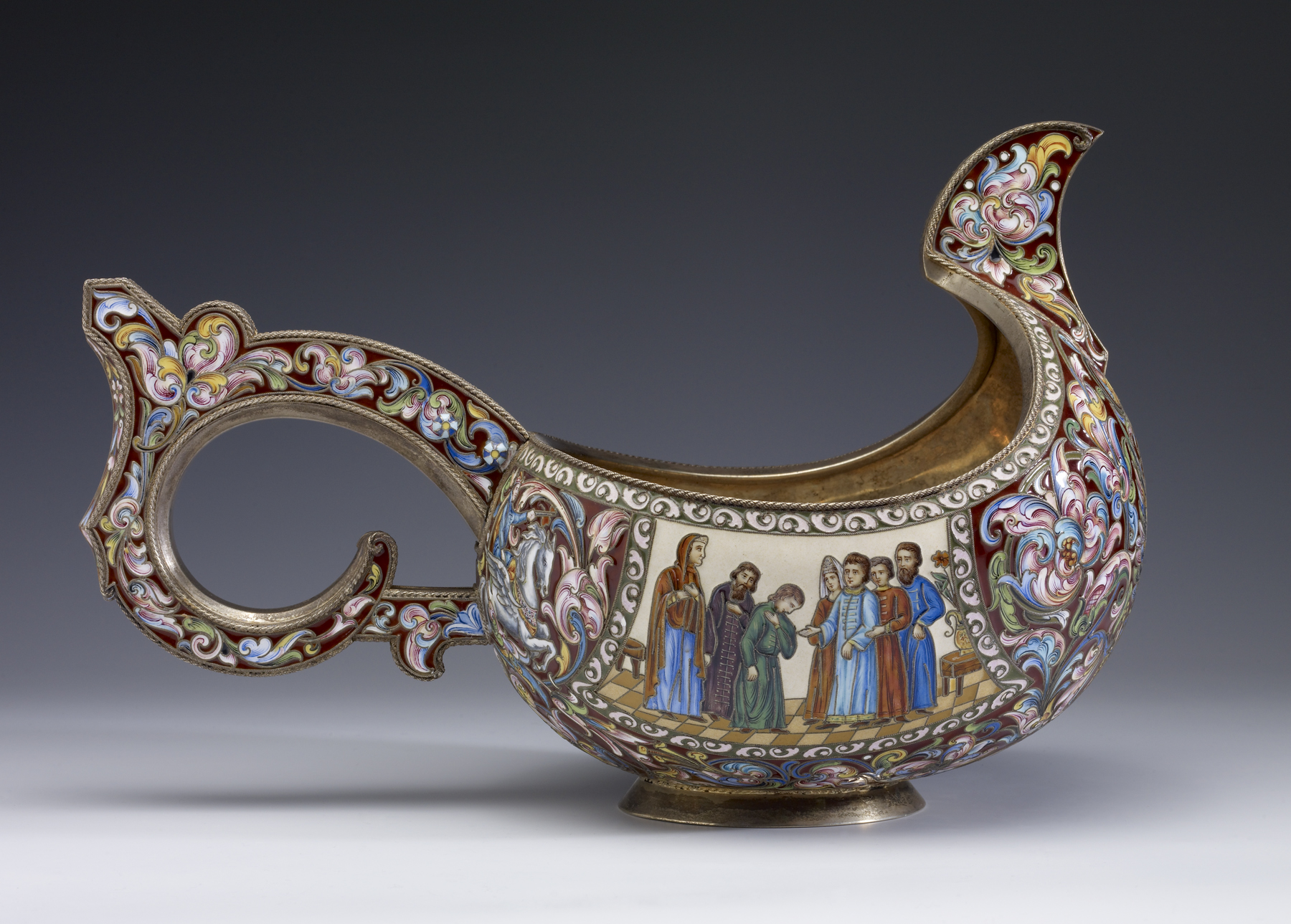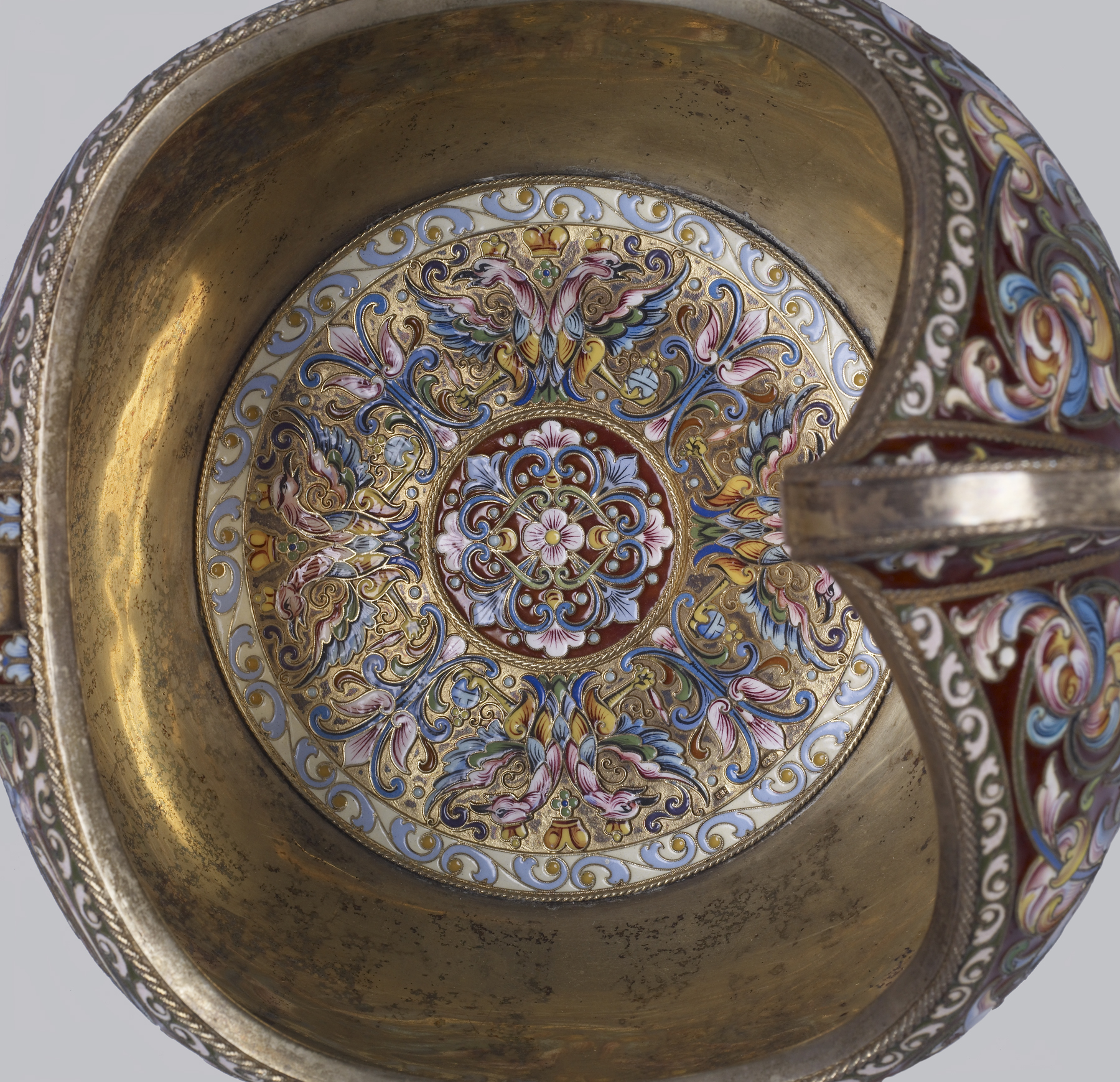Marriage Kovsh
(18th and 19th Centuries )
Two reserves are painted in glossy filigree enamel on this large, vibrantly colored kovsh. One shows a wedding feast in which the bride, identified by her kokoshnik, is seated at a table with the groom and four other diners while a servant serves a swan. In the other, the future husband and his parents meet the bride and her family. The execution of both scenes in this early work appears somewhat gauche given the overall quality of the floral enameling. On the vessel's exterior and the baroque-styled handle, there are multi-colored, Usolsk-type blossoms in painted filigree enamel against a deep red background. Beneath the kovsh's "prow' appears a crowned, double-headed eagle, and, flanking the base of the handle, two warriors are mounted on winged steeds. A rosette is encircled by double-headed eagles alternating with stylized floral motifs on a plain gilt ground is positioned in the center of the interior.
Inscription
Provenance
Provenance (from the French provenir, 'to come from/forth') is the chronology of the ownership, custody, or location of a historical object. Learn more about provenance at the Walters.
Acquired by Jean M. Riddell, Washington, D.C.; by bequest to Walters Art Museum, 2010.
Geographies
Russia, Moscow (Place of Origin)
Measurements
H: 7 15/16 x W with handle:12 1/8 x D: 7 5/8 in. (20.2 x 30.8 x 19.4 cm)
Credit Line
Bequest of Mrs. Jean M. Riddell, 2010
Location in Museum
Not on view
Accession Number
In libraries, galleries, museums, and archives, an accession number is a unique identifier assigned to each object in the collection.
In libraries, galleries, museums, and archives, an accession number is a unique identifier assigned to each object in the collection.
44.855






